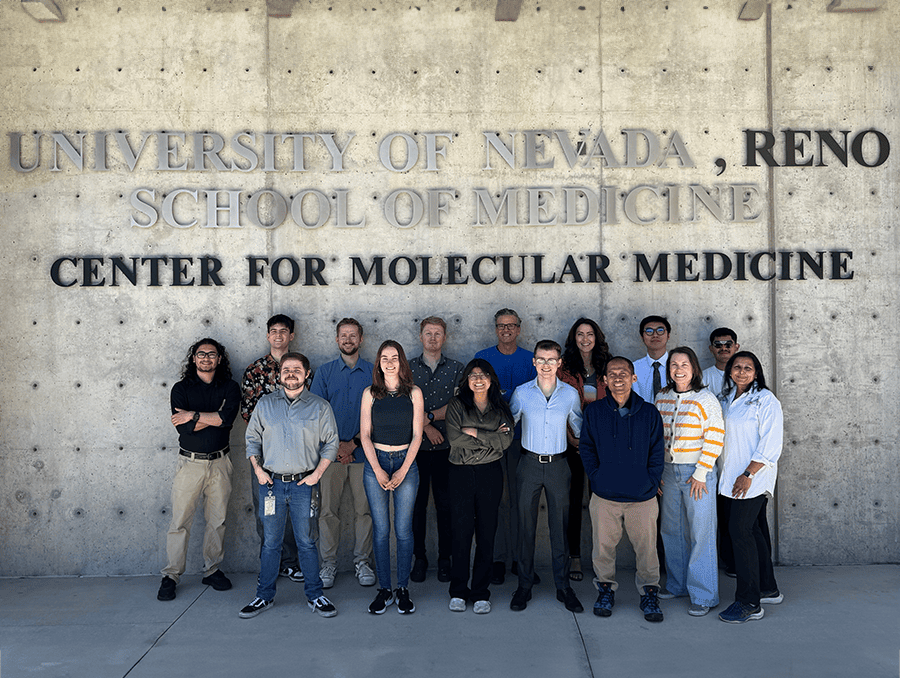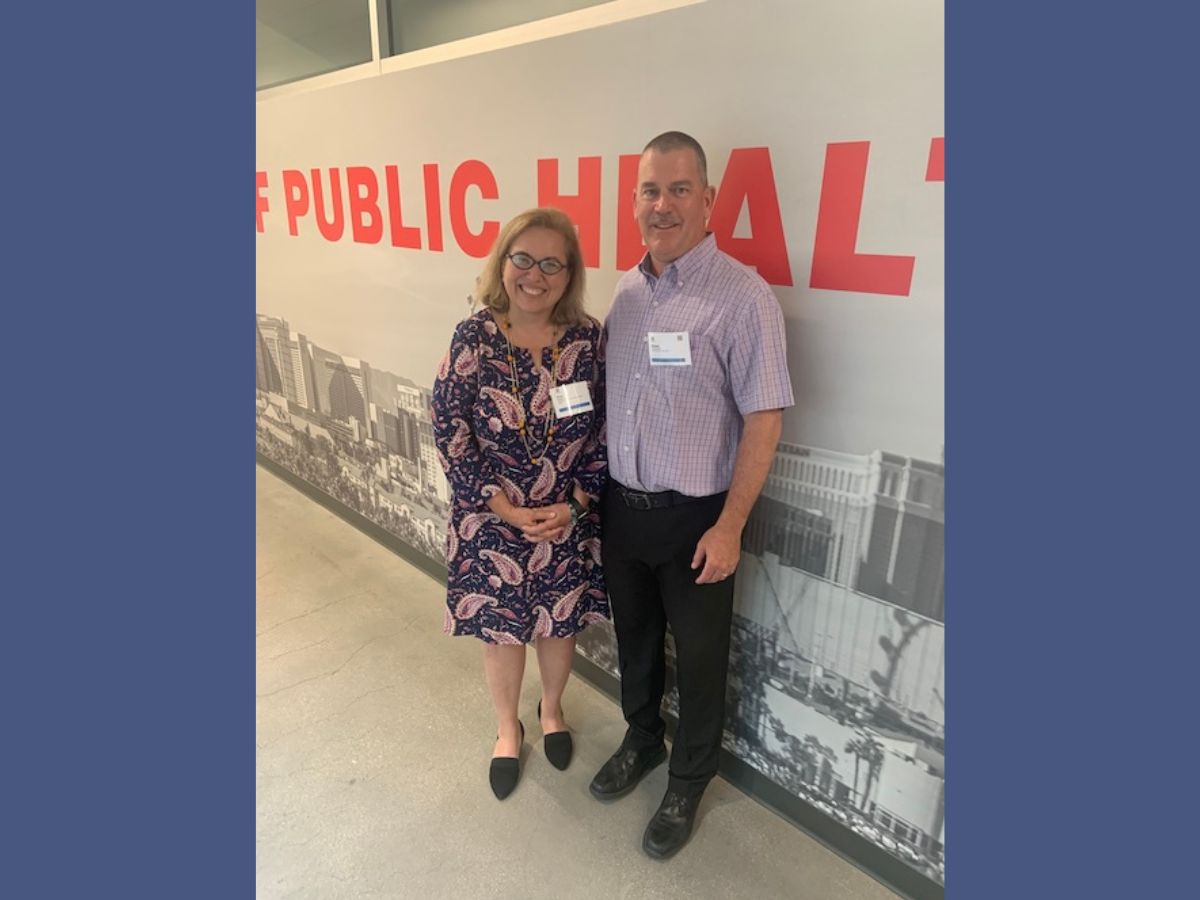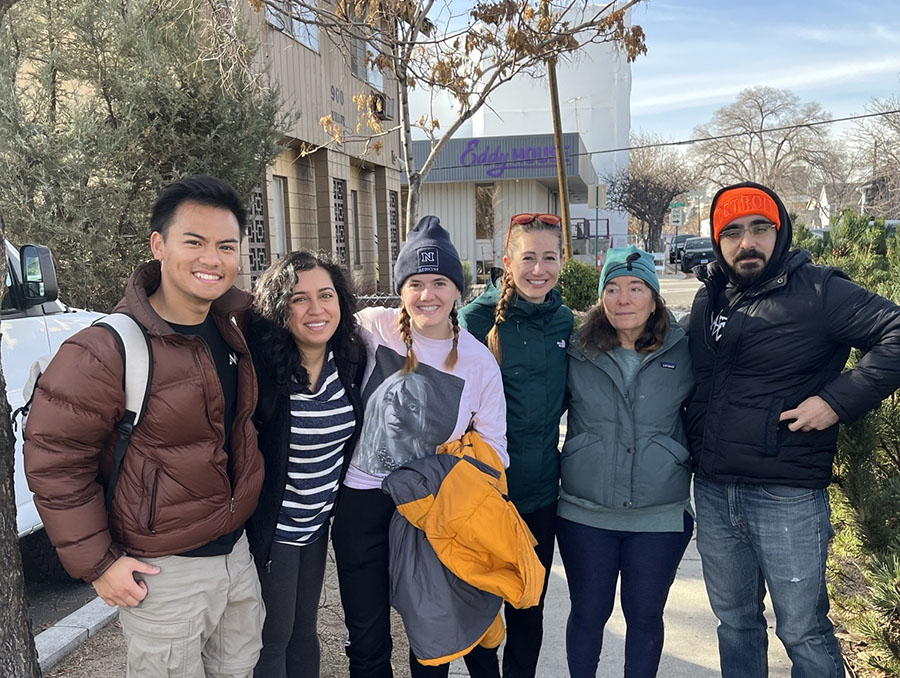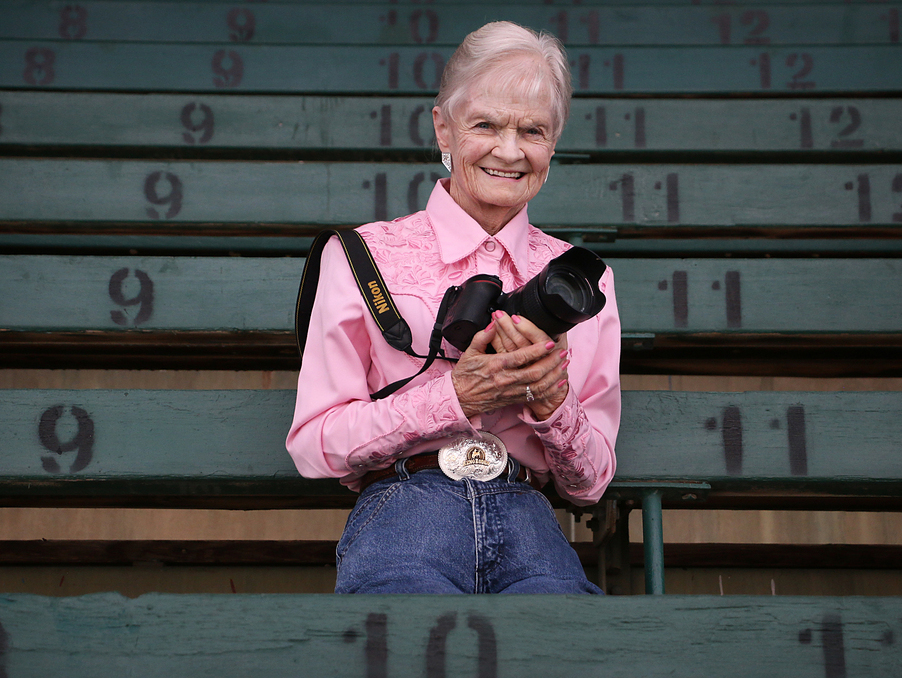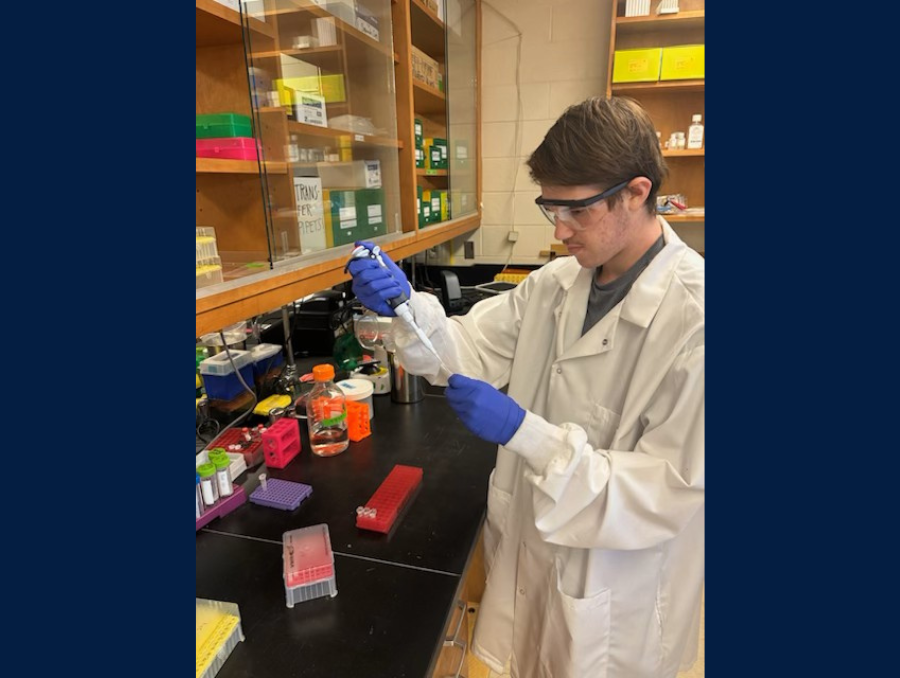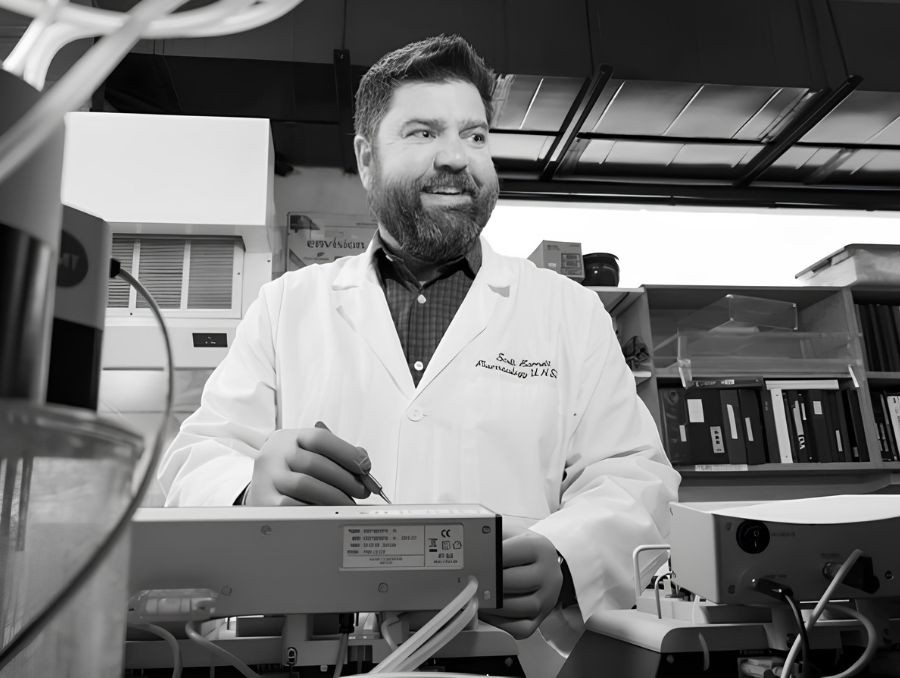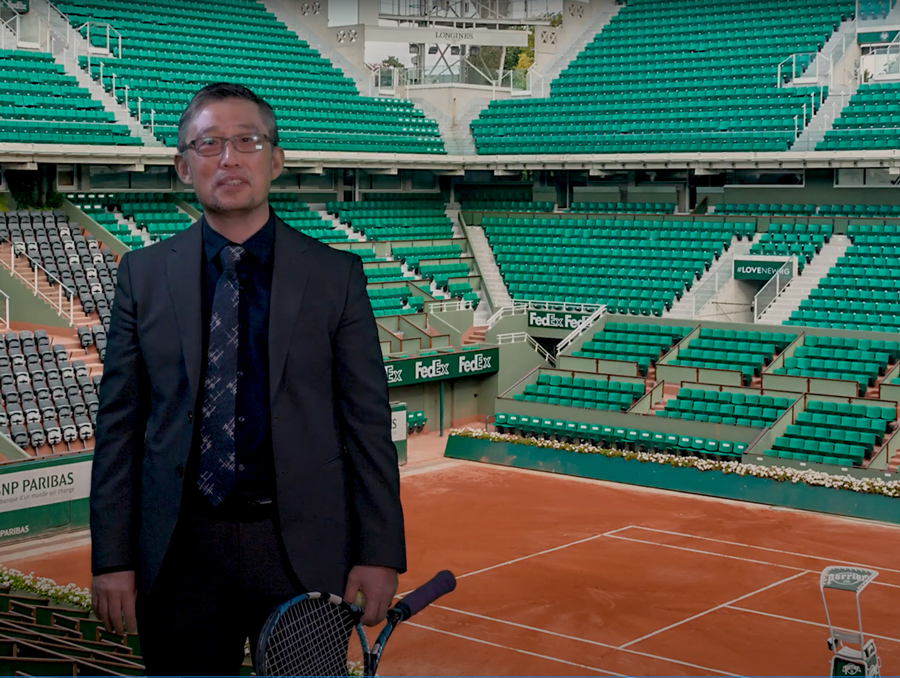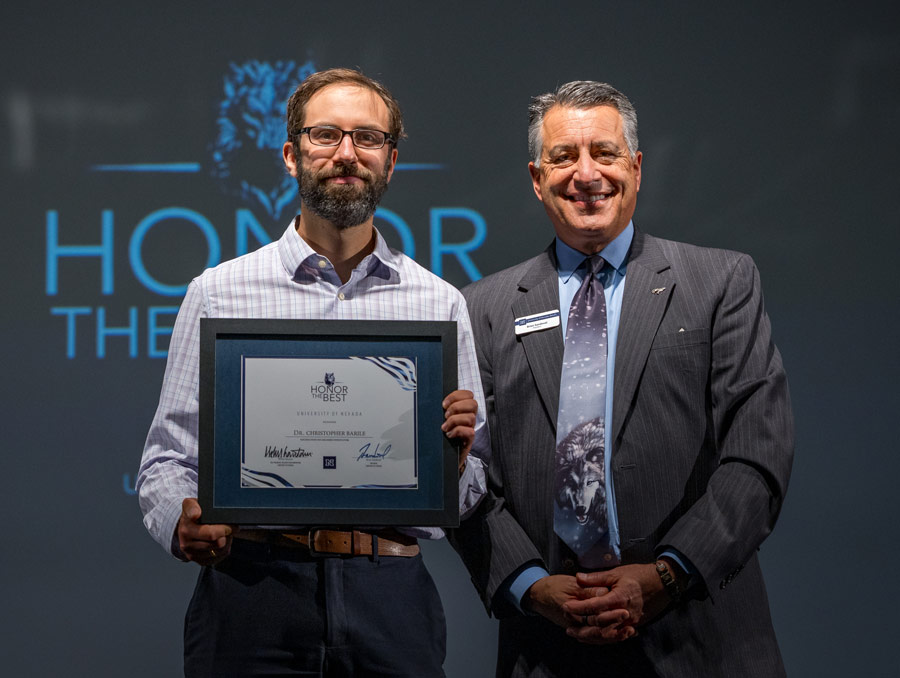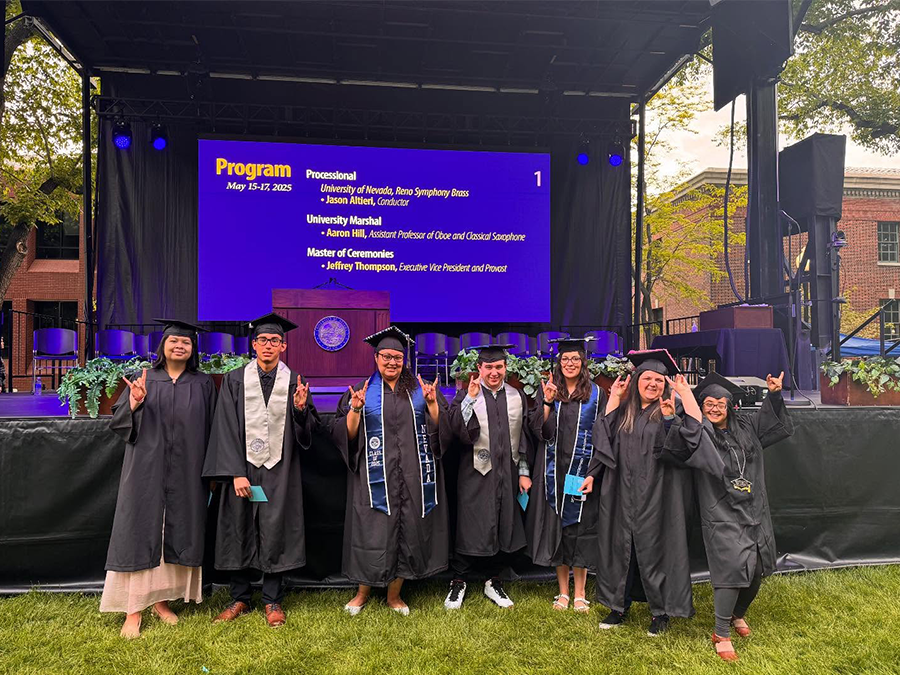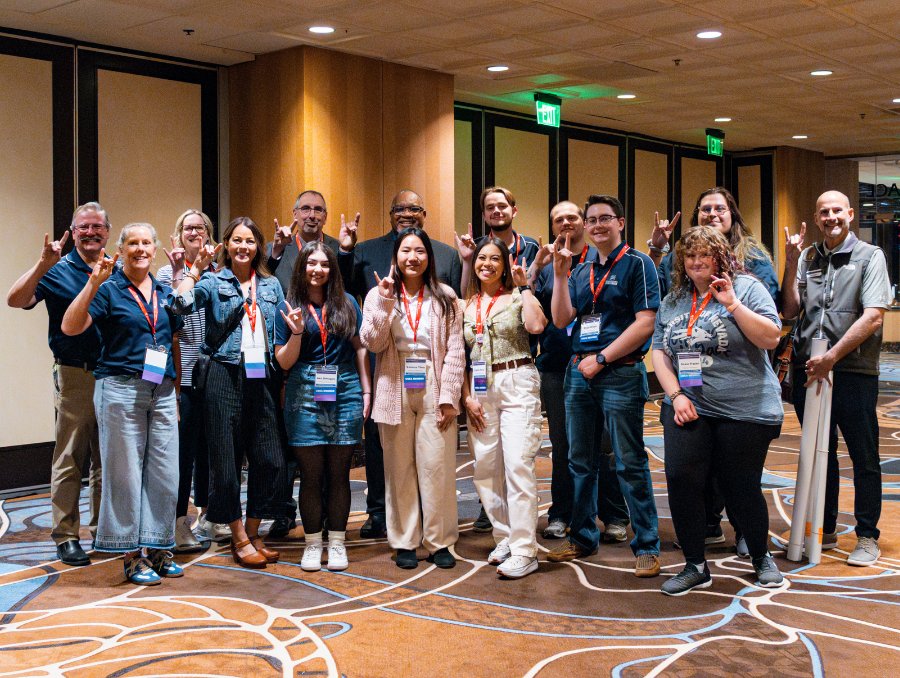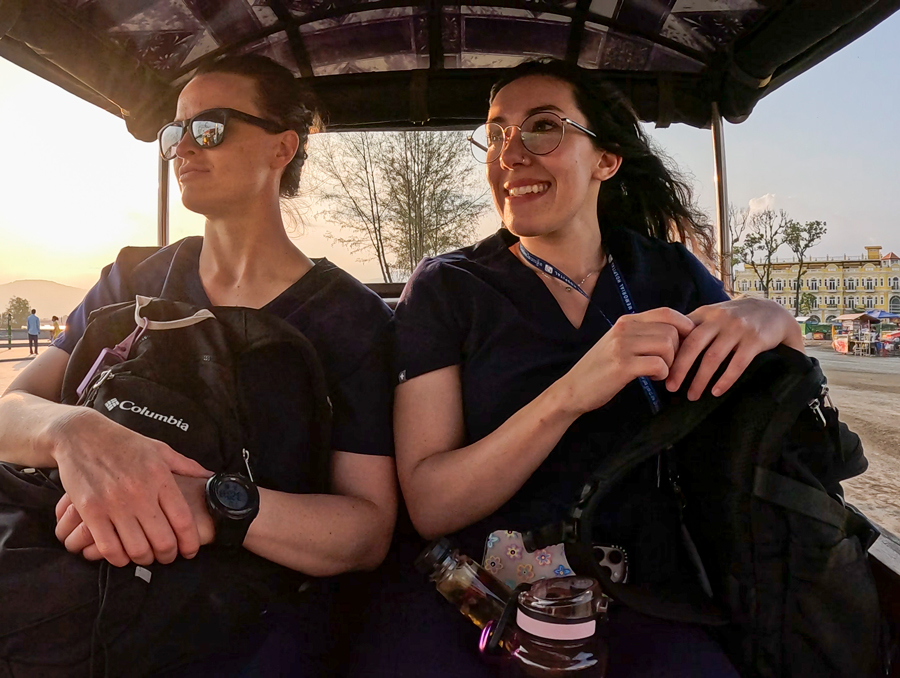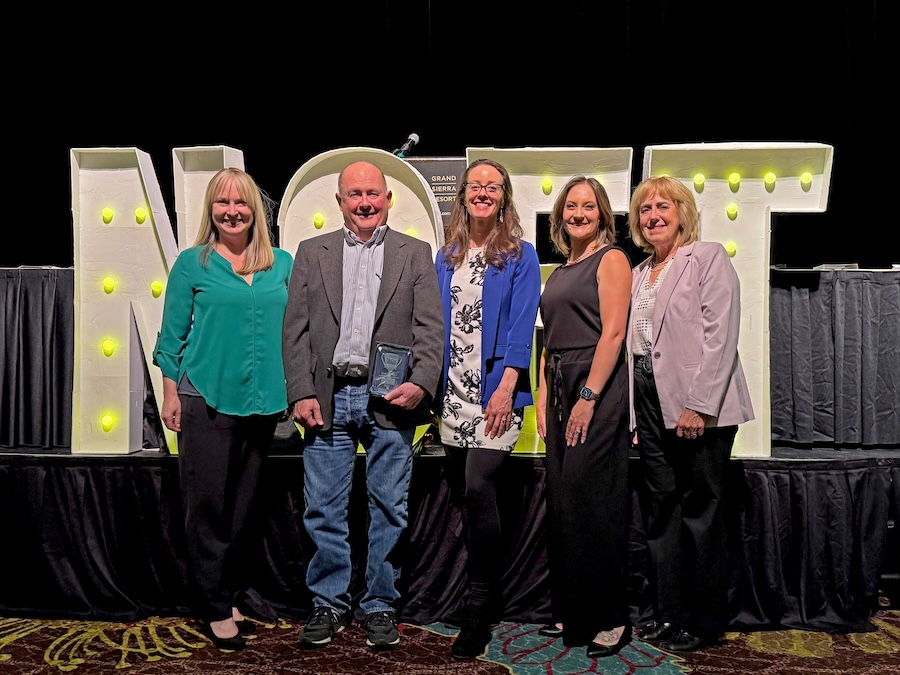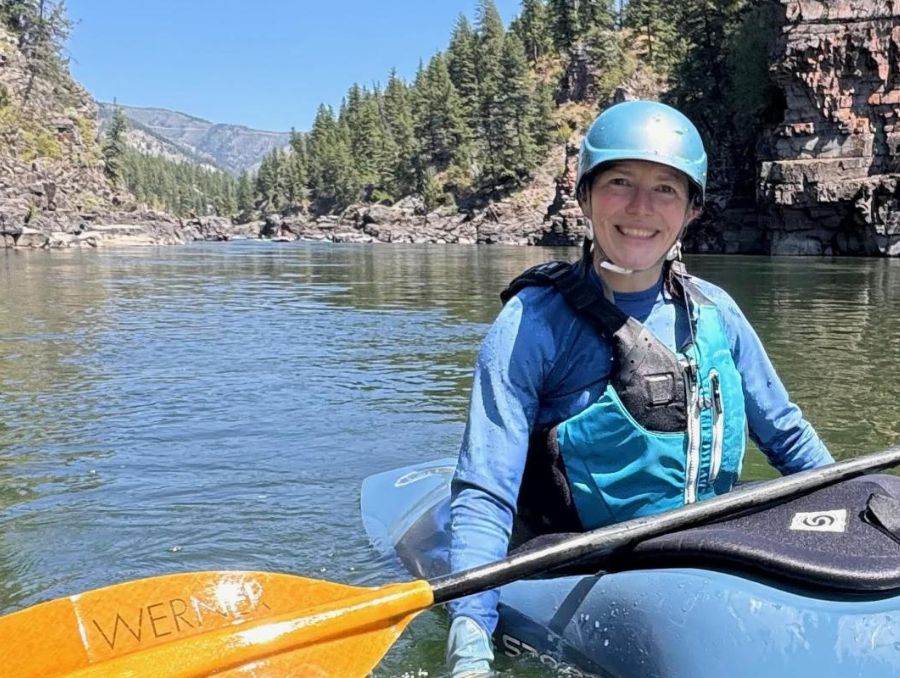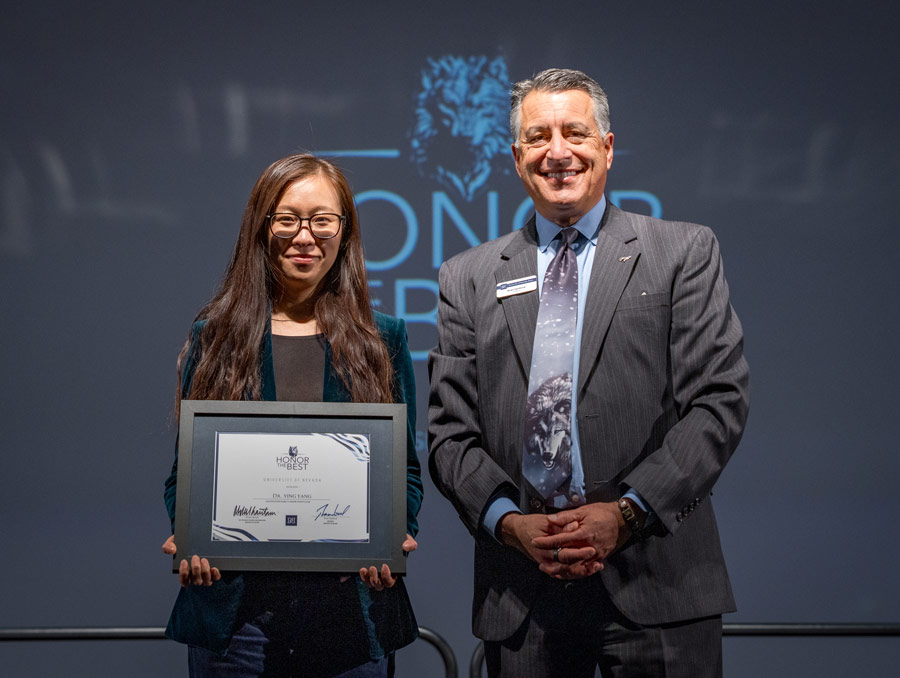Although Arthur “Tony” Islas typically applies his wilderness medicine expertise in treacherous outdoor environments, it came in handy far sooner than expected while on an airplane to South America.
On the excursion to Argentina, Islas found himself diverting a flight to land in Panama so that a traveler on board could receive emergency surgery after his quick assessment deduced life-threatening abdominal pain. The patient has since recovered.
Mere minutes later, he was summoned again to help a flight attendant free a utensil wedged between her recently crowned teeth.
“And that was all before we had even gotten there!” Islas said with a laugh.
The call to adventure
Islas, M.D., MPH, FAWM, FAMSSM, CAQ-Sports Medicine, is the University of Nevada, Reno School of Medicine's (UNR Med) director of the Sports Medicine Fellowship, and a professor in the Department of Family Medicine, through which he founded the Wilderness Medicine Fellowship program.
His work takes him around the world. His most recent adventure had him serving as a non-paid consultant for Global Rescue, a program that provides medical evacuation to adventurers. Although his travel expenses were covered, Islas specifies that his consultation is “non-paid” to avoid any conflict of interest.
While in Argentina, Islas worked with local medical professionals to develop new treatment approaches for those scaling Aconcagua, one of the famous “Seven Summits” and the highest mountain in the world outside of Asia.
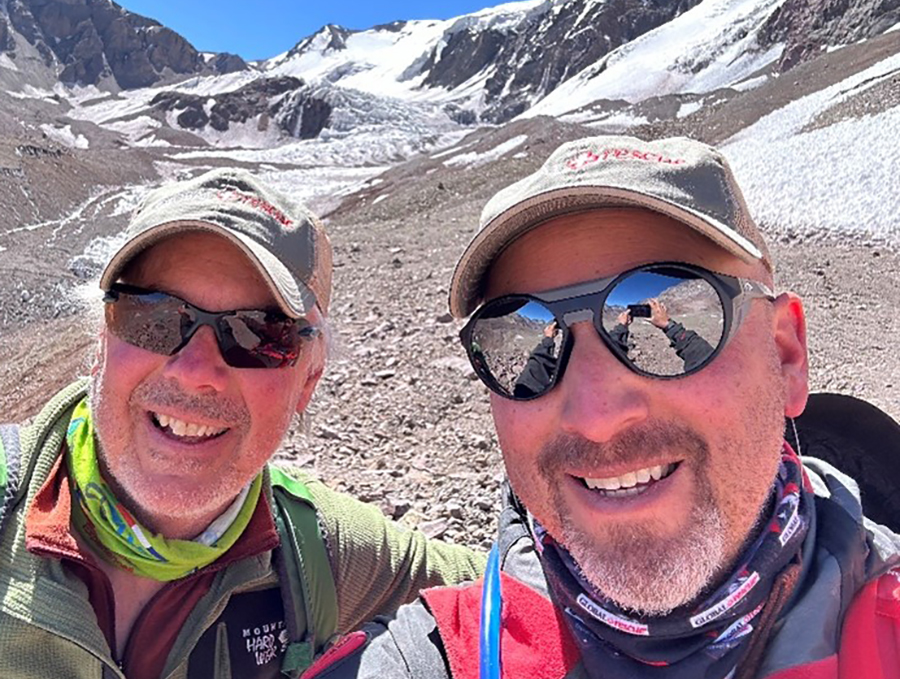 Eric Johnson, M.D., and Islas at the Aconcagua Mountain base camp in Argentina.
Eric Johnson, M.D., and Islas at the Aconcagua Mountain base camp in Argentina.“I was an educator and resource for the physicians who were there at the base camp,” he said. “We worked within the Argentinian health care system to try to put together a better system of care for the climbers that are attempting Aconcagua.”
Islas and his partners noticed an increase in altitude-related illnesses on the mountain, specifically, High-Altitude Pulmonary Edema (HAPE). This was in addition to multiple other injuries and illnesses including frostbite requiring amputation and various other levels of altitude sickness.
Although Islas and the local physicians can’t say for certain why there are more serious cases of HAPE at Aconcagua, he said the uptick in maladies may be partially attributed to an influx of “adventure travelers” who learn about places like Aconcagua from social media and may not invest as much time into practice and planning before attempting the climb.
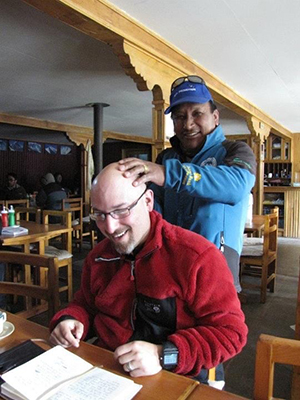 Islas and his late friend, Wongchuu Sherpa.
Islas and his late friend, Wongchuu Sherpa.That’s not to deter people from seeking out adventure, for Islas himself is an avid traveler and explorer. He’s been to Everest more than once and speaks fondly of the community he’s formed there. His office is filled with relics from his journeys: colorful Tibetan prayer flags, a small tapestry depicting the Aztec god of medicine, countless trophies, and a banner for the Wongchhu Sherpa Memorial Hospital in Nepal, named for Islas’ late friend and beloved Everest sherpa.
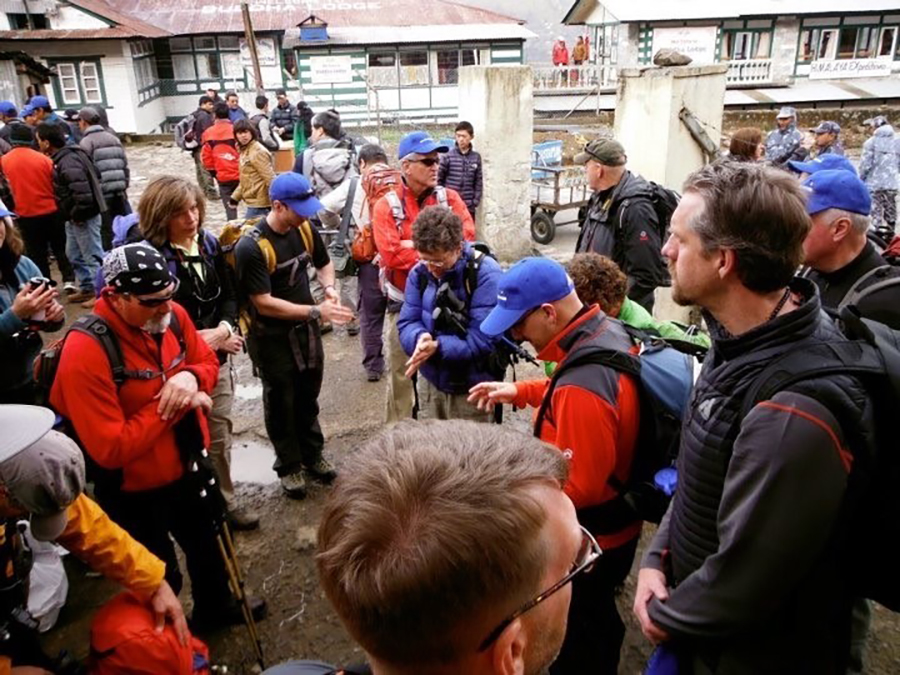 Islas coordinating a trek to Mount Everest at the Lukla Airport in Nepal.
Islas coordinating a trek to Mount Everest at the Lukla Airport in Nepal. Even back in Reno, Nevada the adventure never stops for Islas. Between reviewing X-rays for student athletes, recruiting medical fellows for the programs he oversees, and planning out workshops for local organizations, Islas wields all his medical titles daily. Although family, sports and wilderness medicine may seem disparate on paper, to Islas they are all deeply connected. That intersection is where he finds the most joy and fulfillment.
“I’ve always been a wilderness guy,” he said.
Islas knew early on that it would be a focus for him, but when he was first starting out as a doctor, he was the “border health guy” in El Paso, Texas, where he completed some of his medical study.
“I was on the U.S.-Mexico border for a number of years, and I ran a series of clinics way out in the boonies,” he said. “And one of the things about Texas, whether you’re on the border or not, is that if you work in a small town, you better be on the sidelines for Friday night football. It’s a big deal.”
Sports as a focus for his medical practice was a perfect fit.
“I started doing that as a regular family physician and realized that this is something I really liked and wanted to get more involved in,” he said.
As an avid outdoorsman himself, he knew firsthand that, “those out there in the wilderness, those are athletes. And if I became a sports medicine physician, it would allow me to be a better wilderness physician. So that was the straw that broke the camel’s back.”
Islas took a sabbatical year to complete a sports medicine fellowship, then returned to El Paso to build the sports medicine program at Texas Tech University Health Sciences Center El Paso. That led to an opportunity to move to Reno in 2015.
“One of the reasons we chose to move out here was because it gave me all the foundation I needed to build the wilderness medicine program,” said Islas. “We have every type of environment you could ever want, whether it’s subterranean, whether it’s desert, forest, high altitude. If I want to get to the beach, it’s not too far. It has everything I could ever want for a wilderness medicine educational laboratory. What better place to do this?”
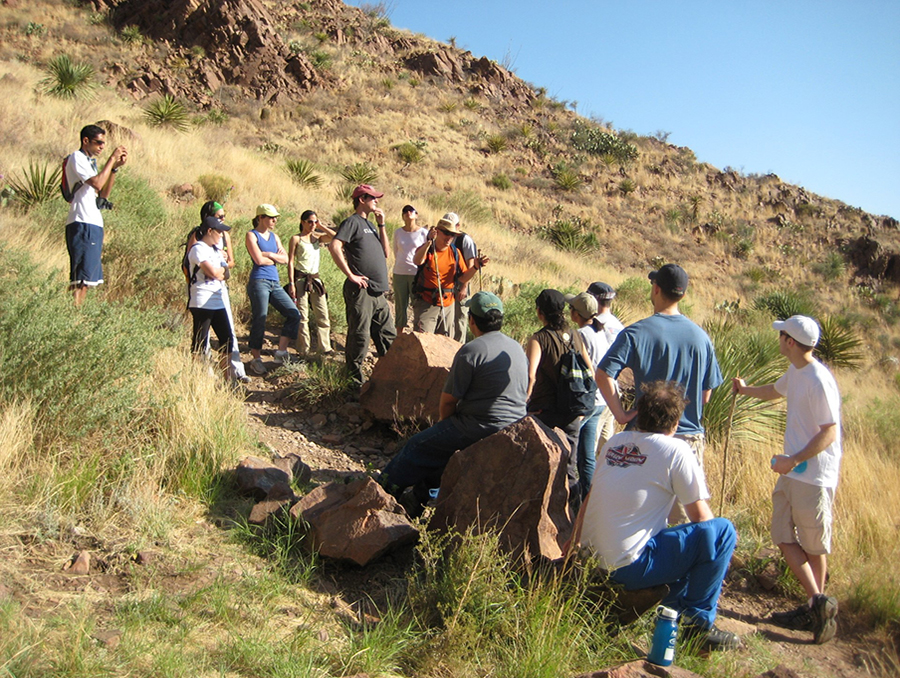 Islas teaching a wilderness medicine class in Reno, Nevada.
Islas teaching a wilderness medicine class in Reno, Nevada. There were “like minds” here as well, Islas said, citing other members of the Wilderness Medicine Fellowship team, including Richard Williams, M.D., David Fiore, M.D., Dan Spogen, M.D., and Gary Johnson, M.D., who first spearheaded the University’s student elective in wilderness medicine in 1996. As far as the team knows, it’s the oldest program of its kind in the country. A quick glance at the team’s biography page reveals a united passion for adventuring, education, and medicine.
Islas beams with pride talking about his contributions to this team, but another role he celebrates is being the medical director for Great Basin National Park, where he oversees medical operations for park visitors.
“I always say, ‘I hold two of the greatest Nevada jobs in medicine,’” said Islas.
‘Ready for whatever’s next’
Islas and his collaborators see an increased demand for doctors with a unique, varied skillset. He’s working on building a curriculum that would attract prospective wilderness medicine fellows and send them on expeditions around the world, like a three-week rotation serving at a Himalayan hospital.
Islas encourages aspiring medical professionals to seek out any learning opportunity they can find.
“If you’re a health care provider or health care student, getting into the wilderness medical society is a great place to start,” he said. “And for someone who isn’t yet in the medical sciences but wants to learn more about it, look around for wilderness first aid trainings. If you spend a lot of time in the outdoors, it’s something you should investigate anyway.”
And as for Islas, more adventures are imminent, including potential excursions to Mongolia or the African continent. He’ll be ready for whatever’s next.
“You never know what will come up,” he said. “The world is wide.”
Learn more about the sports and wilderness medicine opportunities

